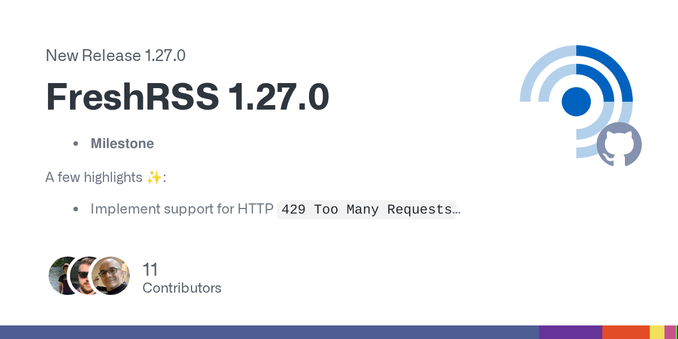Et toi, tu as mis à jour ton instance FreshRSS ?
**Setting up a RSS reading gig – selfhosted server & client**
I prefer reading news and blogs via RSS.
Until recently I used 2 apps for that: Feeder on Android and Thunderbird on Linux.
I wanted to have a central place that stores and synchronizes my RSS feeds.
Server
Mastodon friends suggested me (of course they did) self-hosting FreshRSS or Tiny Tiny RSS server.
So I created a new VM (32G disk, 4G RAM) on my Proxmox server, installed Debian 12 and then Yunohost. It sounds easy, but it took me several hours. In brief: Installing Debian was easy, but I struggled with setting up networking (static IP). Installing Yuno was also easy1, but I failed with pointing it to the right domain. Firstly I pointed it to my TLD (Top Level Domain) which was wrong, because I already have some other services using my TLD. There are some CLI tools in Yuno that allow changing its primary domain to subdomain (yunohost tools maindomain -n yuno.mydomain.info). Then I updated my DNS records for my yuno subdomain to point to my router’s IP. Then I created a new config file on my nginx reverse proxy to redirect requests to yuno server. Then I created Letsencrypt certificate for the new subdomain.
After that, installing FreshRSS was easy: I just searched for it in Yuno ‘play store’ and clicked install. I could choose between installing it under sub-subdomain or /rss folder. I’ve chosen the latter. So my FreshRSS is now accesible via https://yuno.mydomain.info/rss. Here’s the architecture sketch:
I added my RSS feeds to in and created some categories.
When I tried to access it via FeedMe (Android), it wouldn’t connect. Finally I found I have to set API password in FreshRSS for my user. It wasn’t intuitive to find out where to set the password. It’s in the Settings/Profile/External access via API:
Clients
Then I installed 2 clients: NewsFlash (Linux) and FeedMe (Android). I also installed some other client(forgot the name), but it wouldn’t connect.
Newsflash (Linux)
It works mostly ok, but it cuts off the bottom few lines of each post.
I temporarily solved this issue accidentally by reducing line height to from 1.8 to 1.22.
Feedme (Android)
It also works ok, but it has some issues with synchronization of one feed. It wouldn’t sync to FreshRSS. Then I remove it and add it again and it worked.
TL;DR
I can summarize the experience reading news via RSS with two words: clean and without distractions. Self-hosted RSS aggregator allows me better organize my RSS feeds.
I understand everybody who consumes news via FB, news webpages riddled with popups, tracking etc. because setting up and hosting RSS server-client reading gig is far from easy.
An one last thing about RSS feeds (post excerpts) that redirect you to the web page to ‘read more’: I’m unsubscribing immediately.
And a big thank you for all bloggers who provide full-text RSS feeds/posts: 🤟
Footnotes
https://blog.rozman.info/setting-up-a-rss-reading-gig-selfhosted-server-client/
FreshRSS 1.27 self-hosted RSS feed aggregator adds stronger security, category search, custom favicons, and PHP 8.5 support.
https://linuxiac.com/freshrss-1-27-feed-agregator-now-supports-php-8-5/
Je suis super content, j’ai reussi a installer finalement un serveur #wireguard me permettant d’avoir acces a mon #freshrss depuis l’exterieur !
Grace a #wgeasy qui est merveilleux :) tout cela en docker via #portainer :)
https://github.com/wg-easy/wg-easy
J’ai reussi a faire du https grace a #NginxProxyManager
Bref je suis assez fier de moi 🤓
Aside: you can read how to do this here
https://doc.wallabag.org/user/configuration/rss/
Copy the #RSS link #wallabag puts out and add it as a source in #FreshRSS. And to my surprise, it actually links to the proper article instead of linking to the internal wallabag URL. I would’ve fixed it by parsing it in #huginn though, should it’ve behaved the way I expected it to #asca #server #aside
RSS
wallabag provides RSS feeds for each article status: unread, starred and archive. Firstly, you need to create a personal token: click on Create your token. It’s possible to change your token afterwards by clicking on Reset your token. Now you have three links, one for each status: add them into your favourite RSS reader. You can also define how many articles you want in each RSS feed. By default there will be 50 articles in the feed.
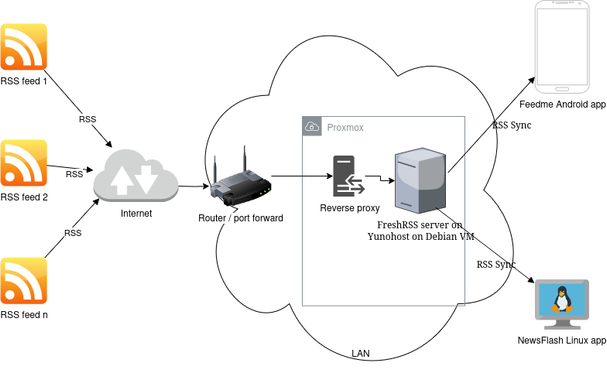
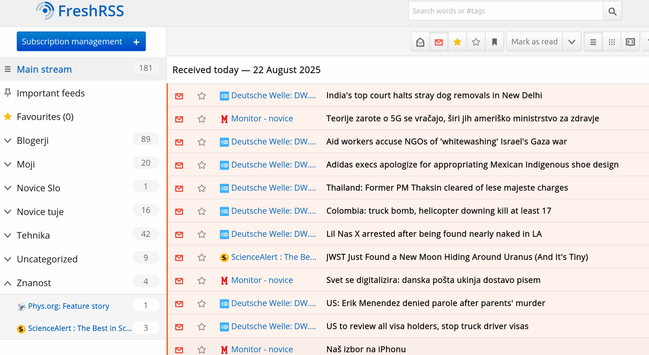
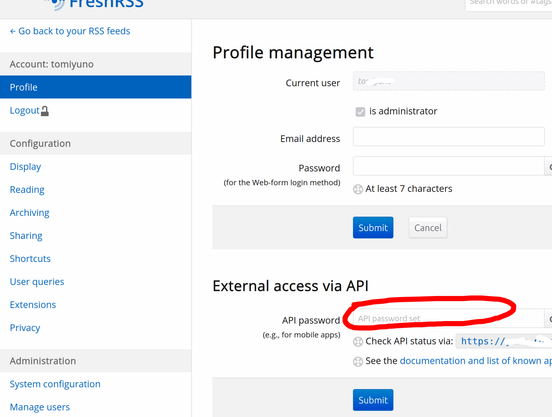
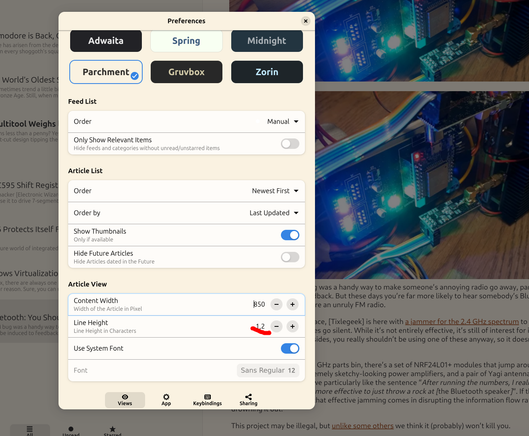
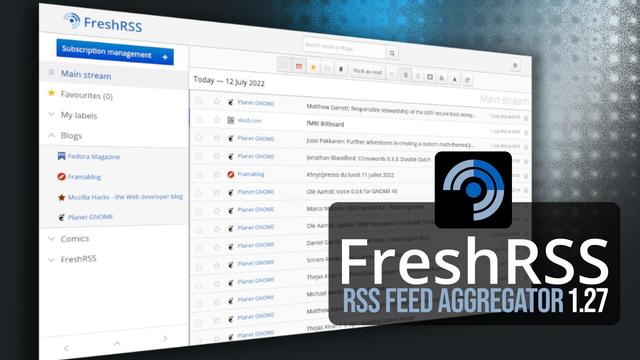

 🎸 🏳️🌈 ⁂
🎸 🏳️🌈 ⁂